Visit 10 sacred Spanish missions and sites in San Antonio to celebrate the holiday season
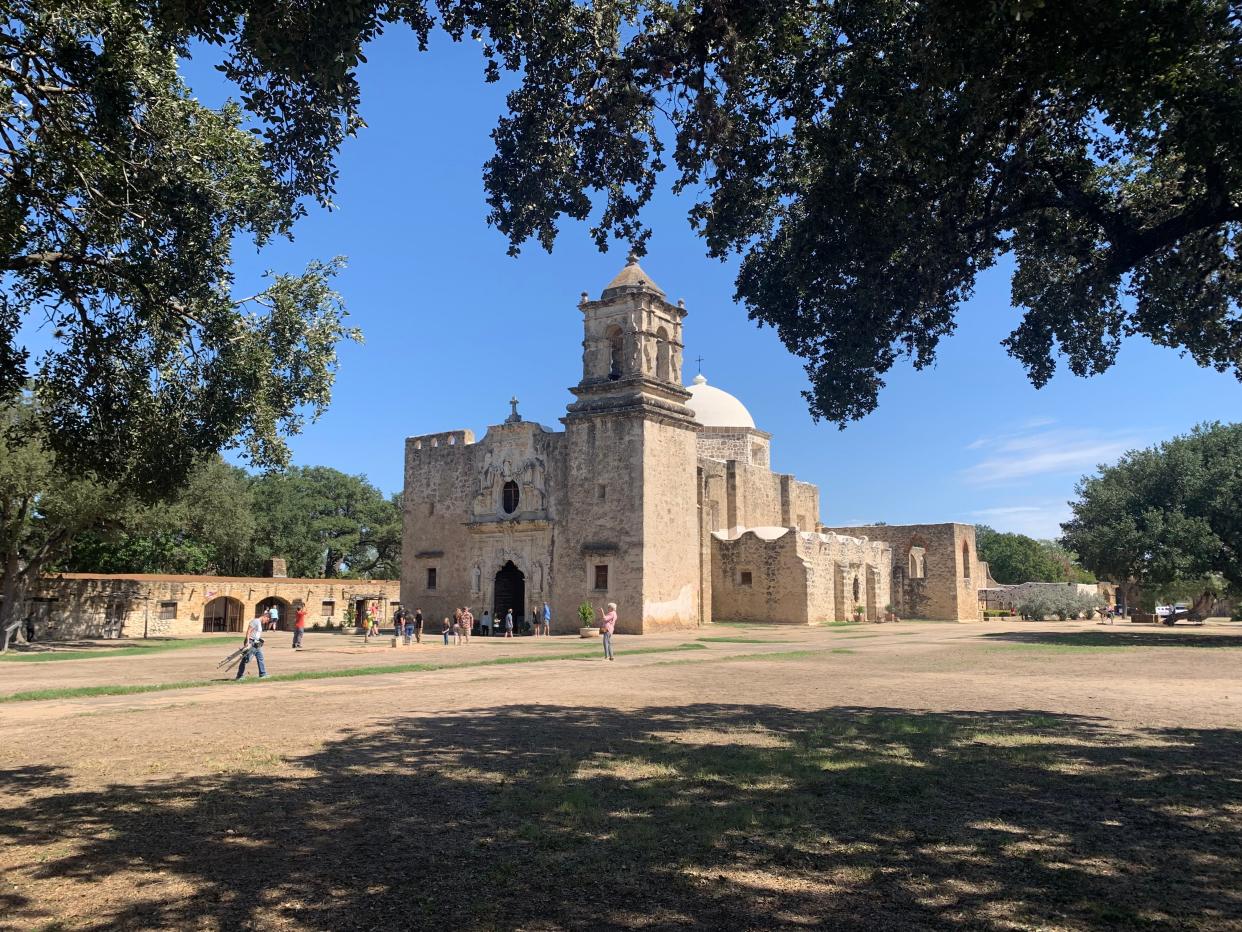
SAN ANTONIO − During a recent road trip to this beguiling Texas city, I spent a considerable amount of time in churches.
Most were Catholic churches, of course, since San Antonio's origins revolved around Mission San Antonio de Valero, the religious analog to the military Presidio San Antonio de Bexar, as well as the four other surviving Spanish missions, and the Cathedral of San Fernando, founded by the first colonists to settle here.
Since my road-trip buddy and I were in town for just two days, we could not visit all the sacred sites in town. Two selections on the following list of 10 hallowed spots, for instance, the city's historic cemeteries and the O'Neil Ford-designed Trinity University campus, I had explored during previous stays.
Please continue sending your San Antonio tips to mbarnes@gannett.com.
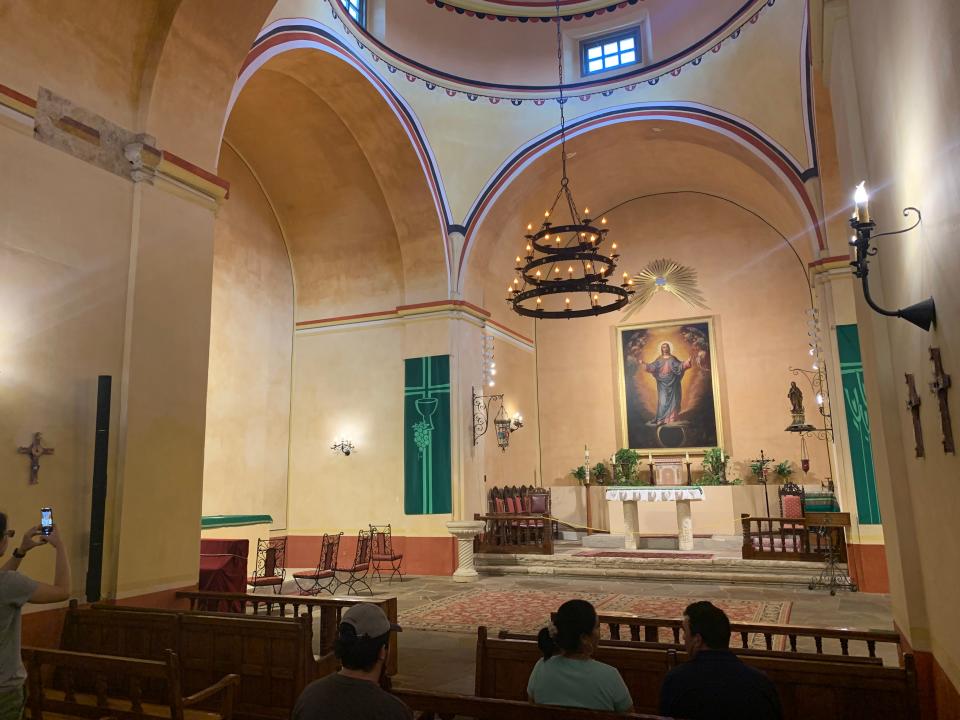
How the Spanish and Natives lived at Mission San José
If you seek a place to think about how Spanish missionaries and Indigenous converts, many of them Coahuiltecans, passed their days and night, spend time at Mission San José (6701 San Jose Dr.), located on the Mission Trail south of downtown San Antonio. Dominated by an imposing church, the complex includes a walled courtyard around which daily life revolved, as well as a modern visitors center with a superbly curated offering of Texas history books. Long a tourist attraction, San José — founded in 1720, it's full name is Mission San José y San Miguel de Aguayo — underwent significant rebuilding by the WPA during the Depression.
The intact beauty of Mission Concepción
It didn't sink in until my most recent visit, but Mission Concepción (807 Mission Road) deserves a lot more love. After all, it is the most intact of the five surviving Spanish missions in San Antonio. Established as Mission Nuestra Señora de la Purísima Concepción de Acuña in East Texas and aimed for the Hasinai people, it moved to San Antonio in 1731 (after a year on the Colorado River in temporary residence in or near present-day Austin; the exact location is unknown). We found little in the San Antonio neighborhood to instruct us on the Battle of Concepción, which pitted Texans against the Mexican army on Oct. 28, 1835 during the Texas Revolution. I'll read up on that conflict before returning to the site. And return I will, because this is one of the loveliest hideaways in the city.
More: Meet me in San Austin: It's time to explore the idea of an Austin-San Antonio 'mega-metro'
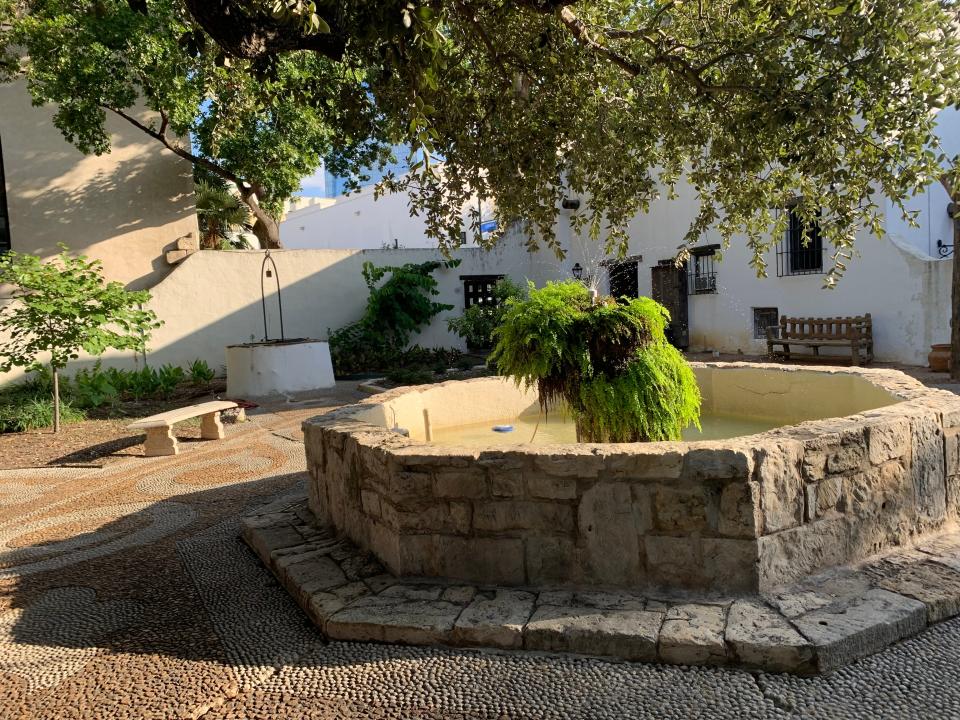
Adding up the elements of San Fernando Cathedral
If you have passed by the majestic exterior San Fernando Cathedral (115 Main Plaza), with its two bell towers and symmetrical bays, windows and entryways, without going in, you have done yourself a disservice. The oldest parts of the structure were built 300 years ago when colonists, many of them from the Canary Islands, needed their own spiritual home on the west side of the San Antonio River. If you look carefully at the sacristy, it reflects the Baroque style of the Spanish Colonial period. The nave and exterior, however, are later French Gothic Revival, perhaps to distinguish the mother church from the old missions. Both styles blend gorgeously. The way that the building relates to the Main Plaza, a historic center for commerce and government, is a reminder of Catholic Church's central status in Spanish city planning.
Another reminder of San Antonio's German legacy
We stumbled on St. Joseph Catholic Church (623 East Commerce St.), built by San Antonio's German-Texan community, right after eating at Schilo's, the German-Texan delicatessen that is the oldest restaurant in town. Nearly surrounded by a shopping mall (formerly Joske's department store), it's a beauty that's easy to miss in a downtown blessed with so many landmarks. Completed in 1871, it would be considered ancient in almost any other Texas town, but in San Antonio, St. Joseph is, by comparison to the missions, a latecomer.
More: In San Antonio, do visit the Pearl District, a jewel among the city's tourist sites
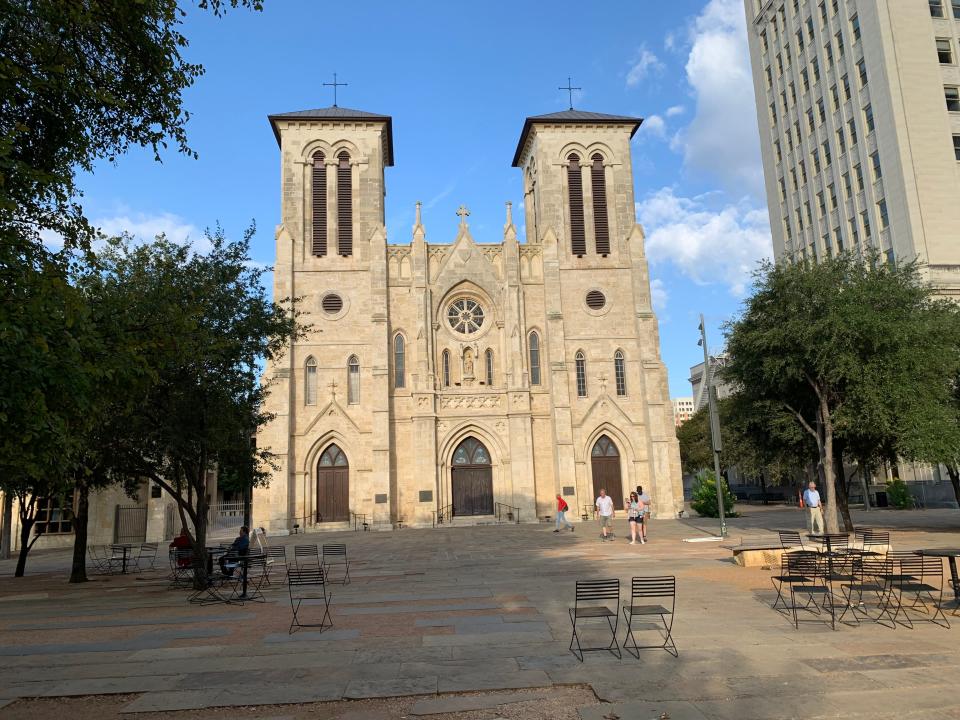
The historical and fanciful mix at the Governor's Palace
Sometimes, it doesn't ruin a historic building to renovate it with a touch of fantasy. The Spanish Governor's Palace (105 Plaza de Armas), completed in 1749, is a low-lying masonry and stucco structure that resembles the similar official residence in Santa Fe, N.M. It served as the governor's residence, but doubled as the Capitol of Texas beginning in 1772. Is this a sacred place? I think so. After falling into disrepair, it was extensively rebuilt in 1930. Everything about the décor, inside and out, reverentially nods to an almost lost history. Today's interpretive signs there make clear what elements are fully supported by evidence and what are not. There's no assurance, for instance, that the palace included a patio, but the one added in 1930 has become a quiet oasis in what can be a busy part of town. Don't skip it.
Even the periphery of Mission Espada is intriguing
A wedding party blocked our entrance into the church at Mission Espada (10040 Espada Road) on this trip. This was the first mission in Texas, founded in 1690 as San Francisco de los Tejas in East Texas. In 1731, its friars and converts were moved to the San Antonio River area, and it was renamed Mission San Francisco de la Espada. The current church was completed in 1756. We explored the nearby buildings, some ruins, and the fine historical museum, built into a former parish school. This is a good place to find out more about the acequias and aqueducts that brought fresh water from the creeks and rivers to the farms and missions of San Antonio.
More: Not the Alamo: Fields near San Antonio yield evidence of deadliest battle in Texas history
San Juan is small but powerful
The first time I visited Mission San Juan (9101 Graf Road), the elderly docent at the small, attached museum had a way of asking questions, abruptly contradicting our answers, only to repeat exactly what we had said, as if heard for the first time. I had teachers like that in school. Also known as Mission San Juan Capistrano, it was one of three founded in East Texas, this one for the Nazonis, that were moved here in 1731. The chapel is very narrow and wonderfully raw compared to the others at the San Antonio missions. During our visit, the memorable museum appeared no longer operational, but the ruins on the grounds are worth examining.
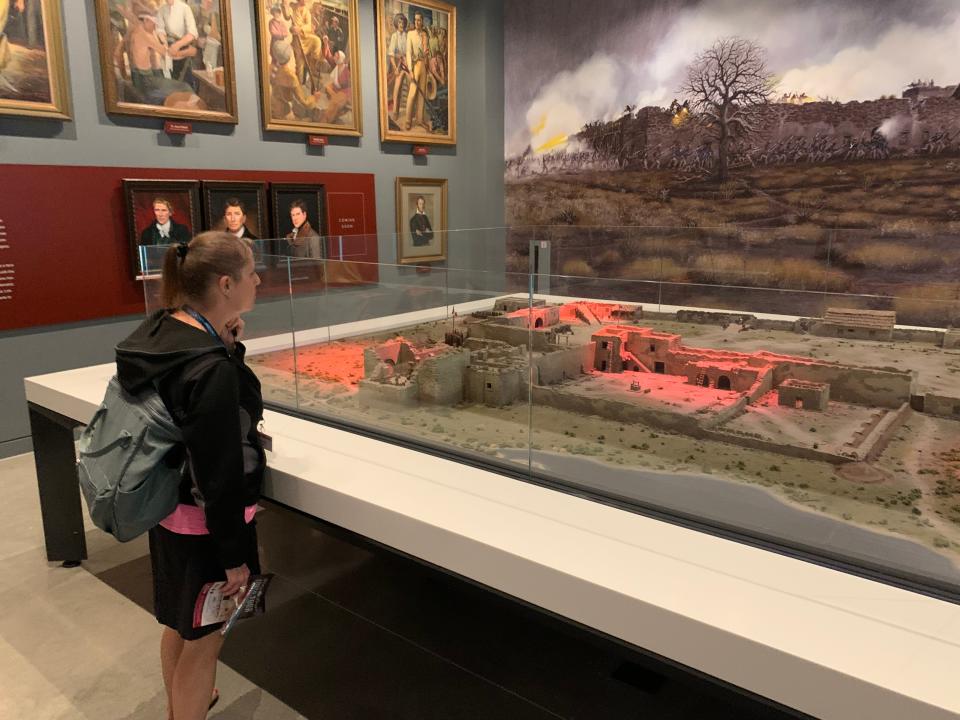
A new museum at the Alamo
In general, I find the pitched battles over the future of the Alamo complex tiresome. Yes, it's the most famous historical attraction in the state, but who cares, for instance, if the Alamo Cenotaph Monument, controversial even when it was raised in 1936, is moved a few yards away? The latest addition to the complex on the final site of Mission San Antonio de Valero is a handsome museum and archive known Ralston Family Collections Center. Displayed here — with considerable tact — are Alamo-themed objects that were collected by musician Phil Collins, some of disputed authenticity. More explanatory texts at this museum could help visitors sort out the historical evidence for themselves. Meanwhile, an even larger Alamo Visitors Center and Museum is slated to open across the plaza in 2027. As for the iconic church itself, the day we visited coincided with a partial eclipse of the sun, and the entire plaza was jammed with folks waiting for what would have been, in earlier centuries, considered a sign from the heavens.
All the big names are found at historic San Antonio cemeteries
As readers of this column know, I like to haunt Texas cemeteries. San Antonio is home to several good ones. After reading books such as David R. Johnson's urban history of San Antonio, "In the Loop," one is likely to feel you know the current occupants of Milam Park, Powder House Hill, City Cemetery No. 1 and San Jose Cemetery. The old families are all represented. For a similar experience in Austin, start with Oakwood, Evergreen and the Texas State Cemetery; in Houston go to Glenwood, Founders Memorial Park and Old Hollywood. In Dallas-Fort Worth, try Oak Cliff, Five Mile and Pioneers Rest, among others.
More: Want to visit San Antonio? Readers rave about city while sharing tips on sites, food, fun
For a taste midcentury modern, tour the Trinity University campus
Memories of top-notch Texas architect O'Neil Ford (1905-1982) are beginning to fade. One place to be reminded of his inspirational genius is the campus of this university that grew out of Presbyterian roots. In a city where most of the private colleges were affiliated with the Catholic Church, Trinity gave San Antonio a Protestant presence in higher education. A native of Grayson County, Texas, Ford was a preservationist who renovated La Villita on the San Antonio River. His original structures reveal a keen sense placement in the outdoors, as well as innovative building techniques. He designed 26 of the graceful buildings at Trinity. Ford's legacies can be found all around the state, but this is the place to start.
Michael Barnes writes about the people, places, culture and history of Austin and Texas. He can be reached at mbarnes@gannett.com. Sign up for the free weekly digital newsletter, Think, Texas, at statesman.com/newsletters, or at the newsletter page of your local USA Today Network paper.
This article originally appeared on Austin American-Statesman: Visit 10 San Antonio missions to reflect on history, holiday season

